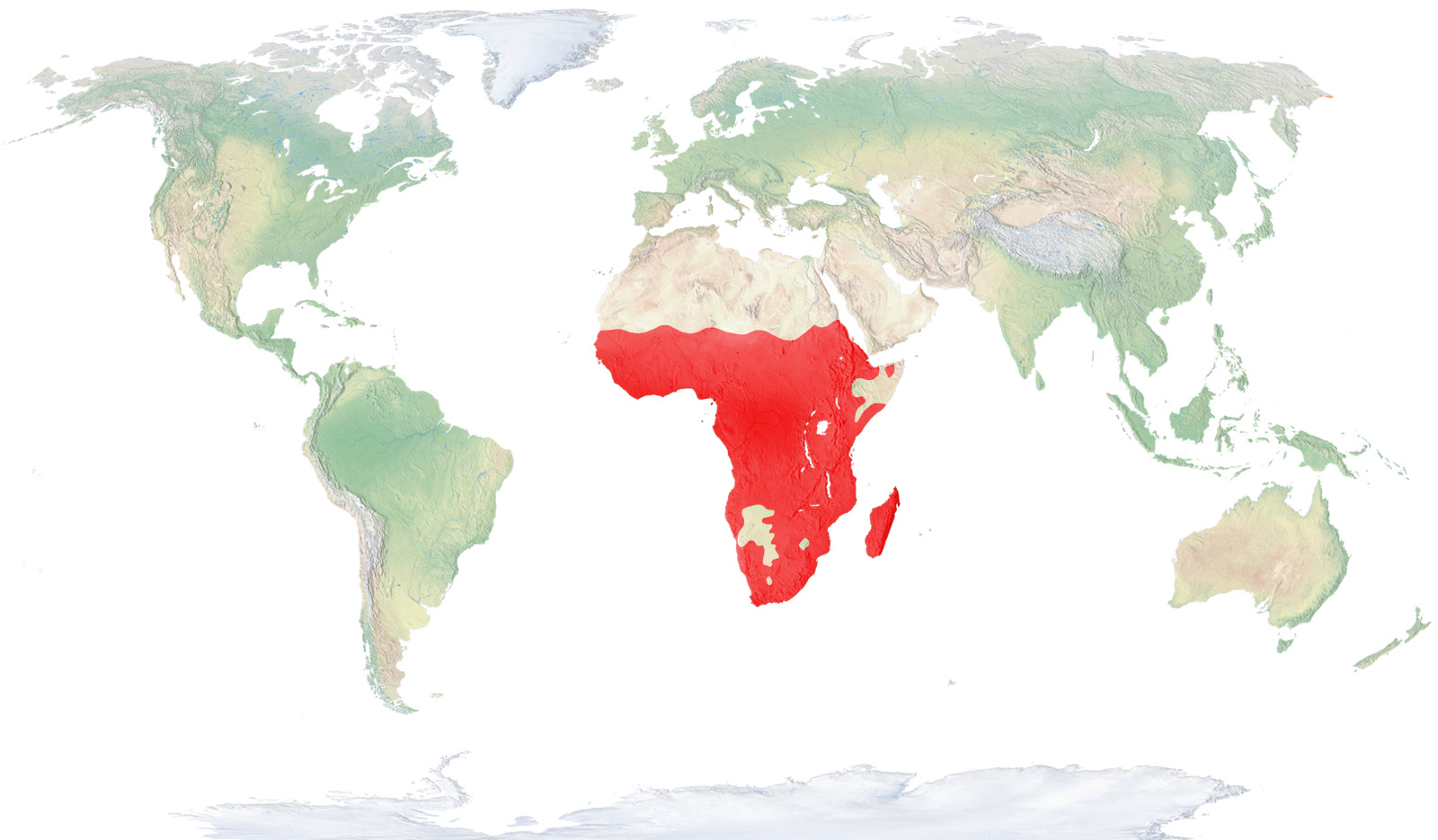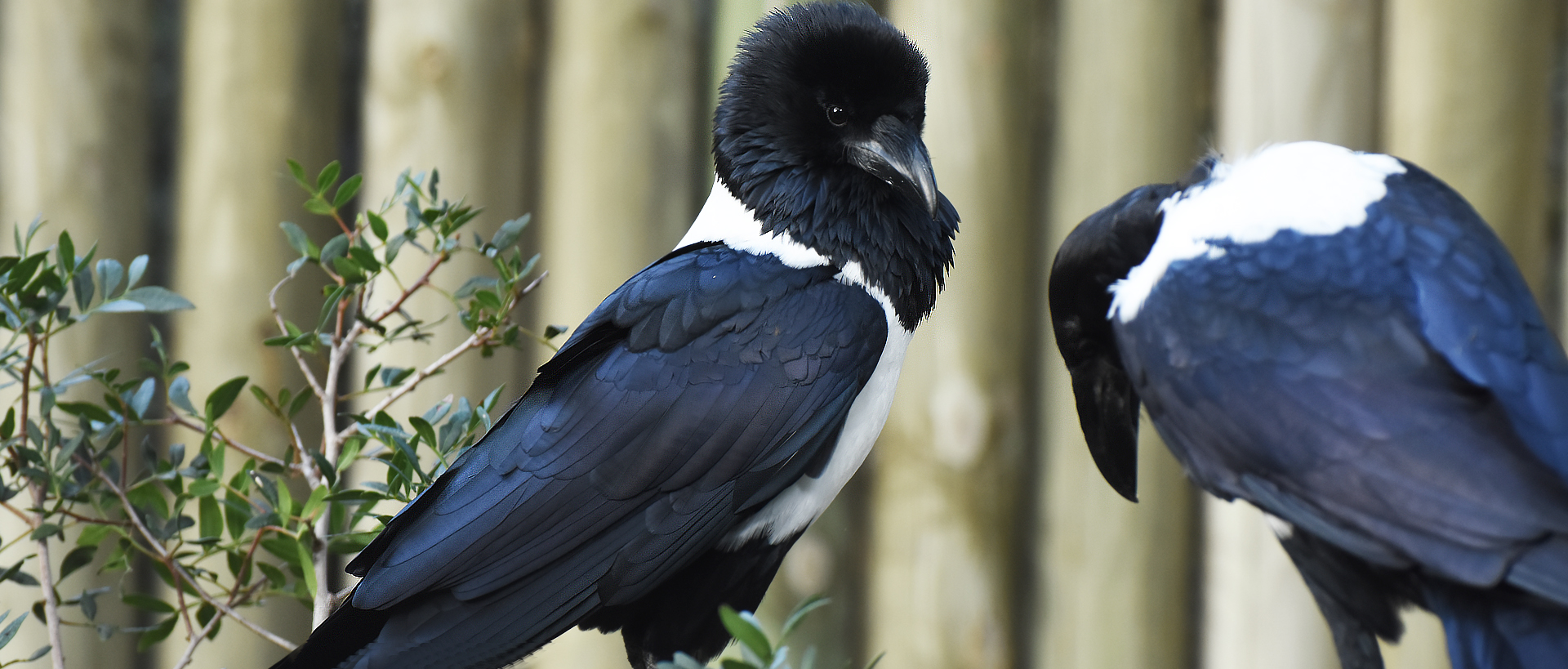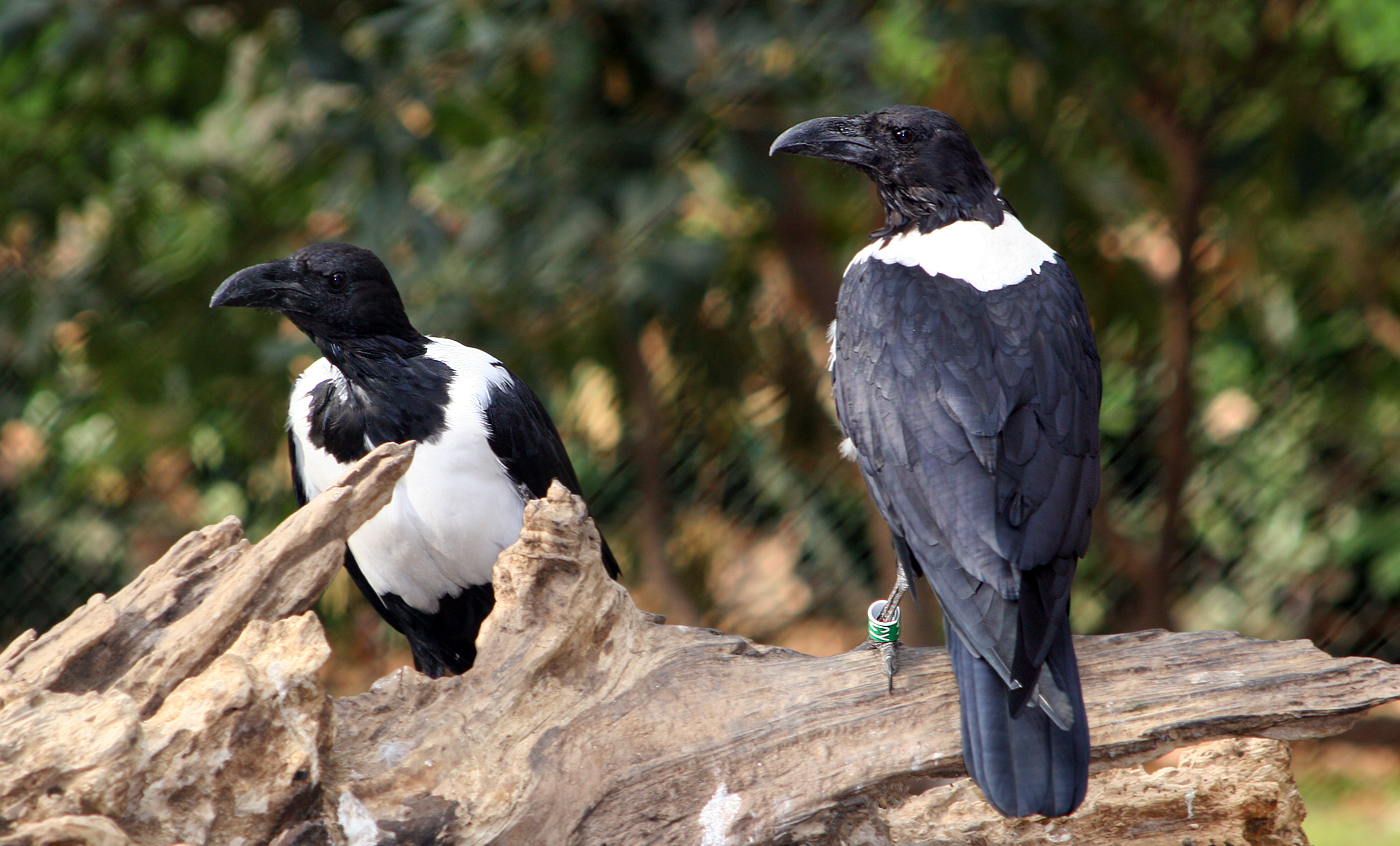Pied crow
The Pied crow is characterised by white markings on its chest and around its neck. The couple, with no visual distinction between the male and female, makes nests in isolated trees and other high-up places. It is an omnivorous animal, found in open areas and populated zones of a large part of sub-Saharan Africa. It usually lives with its breeding partner and in small family groups, although it can form part of a large flock when food supplies are abundant.
Natural habit
South of the Sahara.

- Distribution / Resident
- Breeding
- Wintering
- Subspecies
Risk level
- Extint
- Extint in the wild
- Critically endangered
- In Danger
- Vulnerable
- Near threatened
- Minor concern
- Insufficient data
- Not evaluated
Taxonomy
Physical characteristics
Biology
Reproduction
Biology
The black colour with blue and purple highlights on the head, neck, top of the breast and wings contrasts with the white neck that surrounds the dorsal area, extending to the belly and under the wings.
The Pied crow inhabits almost all open regions of Africa to south of the Sahara.
With omnivorous diets, they are well-adapted to human presence, frequently visiting the areas surrounding crops, towns and even cities searching for food. They eat all types of invertebrates (spiders, locusts, beetles, termites and snails) and small vertebrates (frogs, lizards, rodents, fish, small birds and eggs). They can hunt birds and bats while in flight and also use the remains. As a good omnivore, they also eat a large variety of seeds, fruits and roots. They normally eat in somewhat large groups.
Monogamous, the two members of the pair build a large cup-shaped nest made of twigs, roots and sometimes wire, covering the inside with mud, manure, wool, string and grass, located high in a tree or in some other high structure. Both members of the pair incubate the eggs, normally four or five, for some 18 or 19 days, feeding them after they hatch.
Crows are known to be intelligent birds, with proof of highly-complex behaviours seen in different species. They have been seen tricking other animals in different ways to capture them; they can avoid traps; follow predators like wolves and coyotes to take advantage of the food they hunt; drop food from heights onto hard surfaces to access the soft part inside; and use objects as tools, among other actions.
Common and abundant throughout its area of distribution, it is not endangered and in South Africa it is even considered a pest and, thus, a species that must be controlled. There is an order to destroy nests in many areas of the country.




